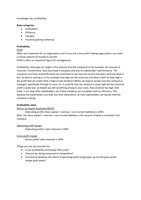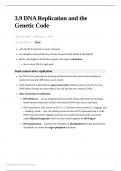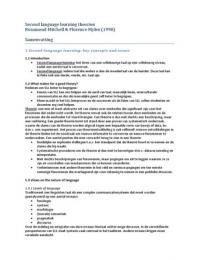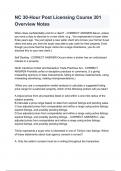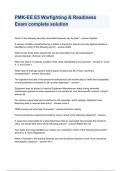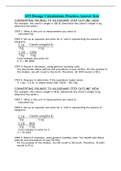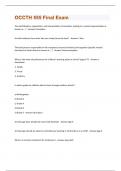Queen Mary University of London
EMS618U – Cell and Tissue Mechanics
Tendon Structure-Function Relationships
1. Introduction
Definition of Tendon: Tendon is a connective tissue that connects muscles to bones.
This definition has changed in recent times. Due to the inability to mechanically test
the tendon in vivo, tendon was considered to be a structureless tissue. This would
imply that tendon was simply a connection between muscle and bone. Recent
advances in technology have led to the ability to mechanically test tendon in vivo.
Due to its hierarchical structure, tendon is now considered to be a highly specialized
tissue, where its function clearly goes beyond simply attaching muscle to bone. We
have now developed a basic understanding of the tendon structure. However, we do
not yet understand the structure-function relationships of tendon. A good
understanding of individual components of the tendon and its hierarchical
construction is crucial in order to understand its function. This can include
understanding the composition and function of individual molecules, to how tendon
functions as a whole in a musculoskeletal system. With understanding of the relative
importance of the different components of the tendon, one can gain more insight
into the changes in tendon function that occur with injury and during repair.
Importance of Tendon Structure-Function Relationships It is important to
understand the structure-function relationships of tendon due to the high incidence
of tendon injury in man and animals. Structure-function relationships give an
indication of the mechanical behavior of normal tendon and thus can be used to help
understand changes in mechanical behavior due to injury. Knowledge of changes in
tendon function due to injury is essential in order to identify the nature of the
injury, it may also be possible to relate changes in function to changes in the
structure of the tendon. This in turn can help to identify injured tissue in need of
repair, and can give an indication of the most appropriate treatment. If we have
understanding of how different components of the tendon contribute to its overall
function, this may allow development of treatments targeted at specific components
of the tendon. An in-depth understanding of tendon structure-function also provides
a basis for the design of tendon implants and tissue engineered constructs.
, 1.1. Definition of Tendon
A tendon is a highly specialized tissue that connects muscle to bone. The functional
complexity of tendons is determined by their mechanical properties and by the
processes involved in the transmission of force between muscle and bone through
the connective tissue at the two tendinous junctions. The efficiency of force
transmission between muscle and bone can be affected by a number of factors
including alterations in muscle activation, changes in joint posture and movement,
and changes in tendon mechanical properties. Moreover, tendons are adaptable in
that the mechanical properties can be altered in response to changes in functional
demand. This adaptability is well recognized in the literature but is still poorly
understood in terms of the processes involved and the time course over which
functional changes occur. Consequently, the mechanical properties of tendons can
be altered in response to both short-term changes in joint mechanical loading and
long-term changes in muscle activation or functional demand. Measures of tendon
mechanical properties can give insights into mechanisms of both tendon function
and adaptation.
1.2. Importance of Tendon Structure-Function Relationships
The ability to characterize the relationship between tendon structure and function
has significant implications ranging from the basic understanding of normal and
healing tendon to more effective clinical management of traditional tendon injuries
as well as the design and evaluation of tendon reparative strategies. By
understanding how force is transmitted from muscle to bone as well as how energy
is stored and released to enable locomotion, tendon function can be quantified
through mechanical testing. Load, rate of loading, temperature, hydration, and
chemical mediators can all influence the mechanical properties of a tendon, and it is
possible to determine the structural source of a change in a particular mechanical
property enabling an insight into the functional implications of a particular
structural change. A strong foundation of in vitro data is available to determine the
relationship between tendon structure and mechanical properties. By identifying
the hierarchical changes from the molecular to the fibrillar level, structure-function
relationships can be determined for individual tendons. Often it is not important to
understand the structural change that leads to an alteration in a particular
mechanical property at a molecular level because of the complexity of tendon
structure and the interweaving of different hierarchical levels. A good example is the
structural change that occurs in tendon aging. Changes in mechanical properties
occurring with aging have been identified but are difficult to relate to the sub-
structural level, and this is due to the inextricable mix of different structural
changes. However, understanding the changes that occur at specific hierarchical
levels that contribute to a particular function is possible to translate into strategies
EMS618U – Cell and Tissue Mechanics
Tendon Structure-Function Relationships
1. Introduction
Definition of Tendon: Tendon is a connective tissue that connects muscles to bones.
This definition has changed in recent times. Due to the inability to mechanically test
the tendon in vivo, tendon was considered to be a structureless tissue. This would
imply that tendon was simply a connection between muscle and bone. Recent
advances in technology have led to the ability to mechanically test tendon in vivo.
Due to its hierarchical structure, tendon is now considered to be a highly specialized
tissue, where its function clearly goes beyond simply attaching muscle to bone. We
have now developed a basic understanding of the tendon structure. However, we do
not yet understand the structure-function relationships of tendon. A good
understanding of individual components of the tendon and its hierarchical
construction is crucial in order to understand its function. This can include
understanding the composition and function of individual molecules, to how tendon
functions as a whole in a musculoskeletal system. With understanding of the relative
importance of the different components of the tendon, one can gain more insight
into the changes in tendon function that occur with injury and during repair.
Importance of Tendon Structure-Function Relationships It is important to
understand the structure-function relationships of tendon due to the high incidence
of tendon injury in man and animals. Structure-function relationships give an
indication of the mechanical behavior of normal tendon and thus can be used to help
understand changes in mechanical behavior due to injury. Knowledge of changes in
tendon function due to injury is essential in order to identify the nature of the
injury, it may also be possible to relate changes in function to changes in the
structure of the tendon. This in turn can help to identify injured tissue in need of
repair, and can give an indication of the most appropriate treatment. If we have
understanding of how different components of the tendon contribute to its overall
function, this may allow development of treatments targeted at specific components
of the tendon. An in-depth understanding of tendon structure-function also provides
a basis for the design of tendon implants and tissue engineered constructs.
, 1.1. Definition of Tendon
A tendon is a highly specialized tissue that connects muscle to bone. The functional
complexity of tendons is determined by their mechanical properties and by the
processes involved in the transmission of force between muscle and bone through
the connective tissue at the two tendinous junctions. The efficiency of force
transmission between muscle and bone can be affected by a number of factors
including alterations in muscle activation, changes in joint posture and movement,
and changes in tendon mechanical properties. Moreover, tendons are adaptable in
that the mechanical properties can be altered in response to changes in functional
demand. This adaptability is well recognized in the literature but is still poorly
understood in terms of the processes involved and the time course over which
functional changes occur. Consequently, the mechanical properties of tendons can
be altered in response to both short-term changes in joint mechanical loading and
long-term changes in muscle activation or functional demand. Measures of tendon
mechanical properties can give insights into mechanisms of both tendon function
and adaptation.
1.2. Importance of Tendon Structure-Function Relationships
The ability to characterize the relationship between tendon structure and function
has significant implications ranging from the basic understanding of normal and
healing tendon to more effective clinical management of traditional tendon injuries
as well as the design and evaluation of tendon reparative strategies. By
understanding how force is transmitted from muscle to bone as well as how energy
is stored and released to enable locomotion, tendon function can be quantified
through mechanical testing. Load, rate of loading, temperature, hydration, and
chemical mediators can all influence the mechanical properties of a tendon, and it is
possible to determine the structural source of a change in a particular mechanical
property enabling an insight into the functional implications of a particular
structural change. A strong foundation of in vitro data is available to determine the
relationship between tendon structure and mechanical properties. By identifying
the hierarchical changes from the molecular to the fibrillar level, structure-function
relationships can be determined for individual tendons. Often it is not important to
understand the structural change that leads to an alteration in a particular
mechanical property at a molecular level because of the complexity of tendon
structure and the interweaving of different hierarchical levels. A good example is the
structural change that occurs in tendon aging. Changes in mechanical properties
occurring with aging have been identified but are difficult to relate to the sub-
structural level, and this is due to the inextricable mix of different structural
changes. However, understanding the changes that occur at specific hierarchical
levels that contribute to a particular function is possible to translate into strategies

